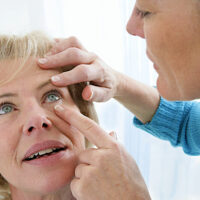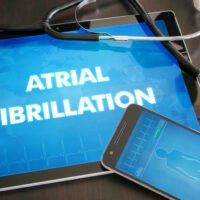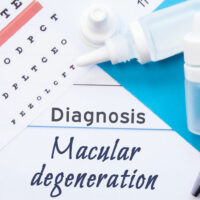16 silent signs of liver cancer one shouldn’t ignore

Liver cancer is a result of the development of a cancerous tumor in the liver. The condition has been classified as a leading cause of cancer deaths nationwide, with hepatocellular carcinoma being the most common type of liver cancer. Although the symptoms do not show up initially, diagnosing the condition as early as possible can help with timely treatment. So, here are some silent signs of liver cancer one shouldn’t ignore:
Silent signs of liver cancer
Unexplained loss of appetite
Liver cancer may trigger the accumulation of fluid in the abdomen, which can cause one to feel extremely full, even in the case of normal or lower food intake. Such a sensation of fullness can lead to loss of appetite, a possible sign of liver cancer.
Yellowing of the eyes and skin
Yellowing of the eyes and skin indicates the liver’s inability to digest a substance known as bilirubin and may be a sign of liver cancer or liver disease.
Pale-colored stools
The liver releases a substance called bile into the small intestine; this substance is responsible for the typical brownish color of stools. However, in case of liver cancer or damage, the liver is unable to produce or release bile, causing stools to turn light or white in color. Pale-colored stools are a common sign of liver cancer, although it may also be indicative of some other liver disease.
Hard lump under the rib
A hard lump forming under the right rib or on the upper part of the right abdomen may indicate the growth of the malignant liver tumor or swelling of the organ.
Chronic pain
Pain among patients with liver cancer typically occurs in the upper right abdomen, the right shoulder, or the back. This pain is usually dull and chronic and may be accompanied by abdominal swelling.
Chronic fatigue
Chronic fatigue is among the most common liver cancer symptoms and involves weakness and lethargy, even in the mornings. Chronic fatigue in addition to other liver cancer symptoms may signify the onset of this condition.
Sleep issues
Most patients with liver cancer grapple with sleep disturbances, especially when the cancer has evolved from non-HBV cirrhosis. Treatments for cancer may aggravate this symptom.
Shortness of breath
Liver cancer may cause shortness of breath if the malignant tumor begins growing and exerting pressure on the diaphragm. The accumulation of fluid in the stomach may also cause breathing difficulties among patients with liver cancer.
Nausea and vomiting
Sometimes, the malignant tumor in one’s liver can increase calcium levels, leading to hypercalcemia. Hypercalcemia can lead to nausea, vomiting, weakness, and other digestive problems.
Breast enlargement and shrinkage of testicles
The liver may not be able to clear out estrogen from the body when one suffers from a liver condition, such as liver cancer. This leads to excessive concentrations of the hormone in the body, triggering breast enlargement among women and shrinkage of testicles in men.
High red blood cell count
High red blood cell count is a common symptom of fatty liver disease, which is associated with the onset of other liver conditions, including liver cancer. Therefore, it is a good idea to get tested for liver disease and liver cancer in case of unusually high red blood cell count.
Throwing up blood
Throwing up blood is often a sign of acute liver failure, which may result from liver diseases like cirrhosis and liver cancer.
Dark-colored urine
The buildup of bilirubin in the liver leads to dark or amber-colored urine, which can be a cause of liver disease or liver cancer.
Easy bruising
The liver’s inability to produce clots may cause easy bruising and the inability of wounds to heal.
Reddening of palms
Reddening of the palms, or palmar erythema, is associated with liver disease and may also be a sign of liver cancer.
Spider naevi
Spider naevi are tiny, spider-shaped arteries that appear on the skin’s surface in clusters. Although these are relatively common among healthy women, several such spider naevi on the upper body may indicate liver disease or liver cancer, especially among men.
Lifestyle tips for individuals healing from liver cancer
Avoid red meat
Although red meat is rich in protein and iron, breaking it down is difficult for the liver, particularly when one is already grappling with liver disease. Further, it may cause excess accumulation of protein in the organ, triggering or worsening fatty liver and liver cancer. Therefore, patients with liver cancer should steer clear of red meat, replacing it with lean meats like poultry and venison.
Reduce salt intake
The liver may not be able to regulate the balance of sodium and water effectively in case of liver damage due to liver disease or cancer. Excess salt intake may aggravate liver problems and its consequent symptoms like abdominal pain and bloating. It is best to strictly limit or avoid salty foods like fries and chips while healing from liver cancer.
Regulate calorie intake
Too many calories can cause a fat buildup in the liver and worsen fatty liver disease among patients already suffering from the condition. Moreover, a meal plan high in calories can increase one’s susceptibility to other health conditions like type-2 diabetes, cholesterol, and heart problems, which can further aggravate the condition among patients with liver cancer.
Avoid processed foods and other sources of trans fats
Processed foods like bacon, sausages, and processed butter and cheese are difficult to digest in the liver and can worsen liver cancer symptoms. Patients with liver cancer should have nutrient-rich foods with healthy carbohydrates and fats, proteins, vitamins, and minerals. Similarly, one should choose oils with healthier fats, such as canola, sunflower, and olive oil.
Have plenty of water
Insufficient intake of water can aggravate existing liver cancer symptoms and worsen the side effects of cancer treatment. Therefore, patients with liver cancer should have plenty of water and other healthy fluids like fresh fruit juices, soups, and coconut water.





